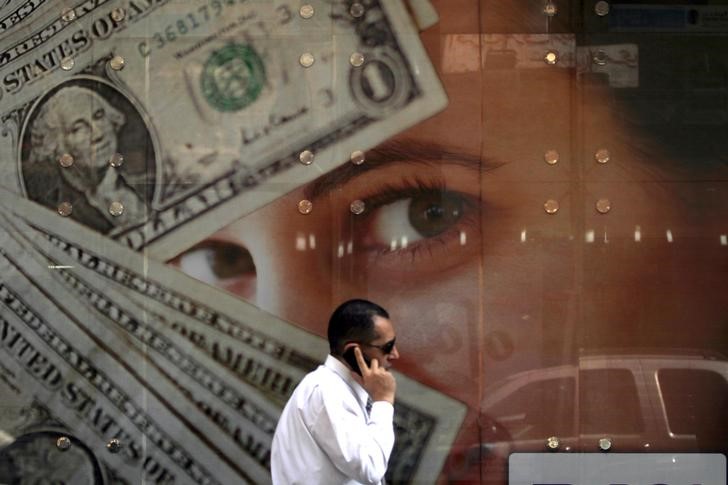Investing.com – The dollar rose against its rivals Tuesday, as Federal Reserve Chairman Jay Powell gave lawmakers a positive assessment of the economy, and expects to continue raising interest rates gradually.
The U.S. dollar index, which measures the greenback’s strength against a trade-weighted basket of six major currencies, rose by 0.52% to 94.76.
In his semi-annual testimony to Congress Tuesday, Powell said the "best way forward" is to continue raising rates, as the job market has strengthened and inflation has moved above the Fed's 2% target.
Powell largely echoed the Fed's recent comments from its June meeting, when the Fed raised interest rates, and hinted at two further rate hikes for this year. Powell could offer further clues on monetary policy when he testifies before the House Financial Services Committee Wednesday.
According to Investing.com's Fed Rate Monitor Tool, 85.6% of traders expect the Fed to hike rates in September, and 56.2% of traders expect the Fed to hike rates again in December.
Economic data showing U.S. industrial production rebounded in June, boosted by a sharp rebound in manufacturing, and gains in mining output, had a somewhat muted impact on the greenback.
Industrial production - a measure of output at factories, mines and utilities - rose to a seasonally-adjusted 0.6% in June from a revised 0.5% decline the prior month, the Federal Reserve said Tuesday. This was slightly above the 0.5% rise forecast by economists.
The dollar's move higher was also supported by a fall in both the pound and euro. Sterling came under pressure amid soft UK data and expectations that Prime Minister Theresa May's Brexit bill could face another challenge in Parliament.
GBP/USD fell 0.76% to $1.3135, while EUR/USD fell 0.47% to $1.1654.
USD/JPY rose 0.53% to Y112.88, while USD/CHF rose 0.31% to 0.9998 as demand for safe-haven currencies fell.
USD/CAD rose 0.59% to C$1.3213 as a rise in expectations for a Bank of Canada rate hike on the back of bullish factory sales data failed to lift the loonie.
The upbeat report reinforces the Bank of Canada's forecast for second-quarter GDP growth and "incrementally lends itself" toward another possible interest rate rise in September, Bank of Nova Scotia said Tuesday.
